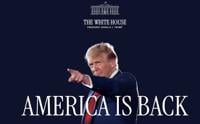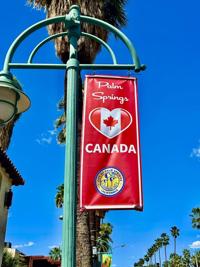More automotive layoffs were announced in Ontario this week as the industry continues to adapt to tariffs from U.S. President Donald Trump.
The union representing workers at General Motorsâ CAMI Assembly Plant in Ingersoll says General Motors plans to temporarily halt and then reduce production of the BrightDrop electric delivery van. The union says the production changes will lead to an estimated 500 layoffs.
Itâs the second Ontario automotive assembly plant to shut down this month since U.S. President Donald Trump announced 25 per cent tariffs on vehicles made outside the U.S.
In an , Stellantis has begun a two-week shutdown of its Windsor Assembly plant that makes the Chrysler Pacifica and Voyager minivans, and Dodge Charger Daytona vehicles.
In a statement, GM said CAMI is making operational and employment adjustments to balance inventory and align production schedules with current demand.
“GM remains committed to the future of BrightDrop and the CAMI plant and will support employees through the transition,” the company said.
The Ingersoll plant makes two models of the BrightDrop Zevo.
In a , Unifor National President Lana Payne said the plant shutdown will be devastating for union members, their families, and the community.
âThis is a crushing blow to hundreds of working families in Ingersoll and the surrounding region who depend on this plant,â said Payne.
GM has informed Unifor that CAMI Assembly will initiate temporary layoffs starting April 14 with workers returning in May for limited production. After that, production will temporarily cease with operations idling until October 2025. During the downtime, GM plans to complete retooling work to prepare the facility for production of the 2026 model year of commercial electric vehicles.
When production resumes in October, Unifor said the plant will operate on a single shift for the foreseeable future â a reduction that is expected to result in the indefinite layoff of nearly 500 workers.
90-day reciprocal tariff pause
U.S. President Donald Trump issued a 90-day pause on so-called âreciprocalâ tariffs this week while amplifying the pressure on China.
The administration said the tariff pause will allow countries to negotiate new trade deals with the United States.
No new tariffs were imposed on Canadian goods this week. But Canada remains impacted by âfentanyl tariffsâ aimed at addressing the cross-border drug trade, as well as tariffs against the automotive industry, steel and aluminum industries.
On Thursday, Trump stepped up pressure on China, raising tariffs on imports to 125 per cent, in addition to an existing 20 per cent tariff.
On April 11, China hit back as it increased its tariffs on U.S. imports to 125 per cent, . The countermeasures take effect on Saturday.
Nintendo Switch 2 delayed
Trumpâs massive new tariffs on Chinese imports have also impacted the release of a new gaming console.
confirmed to Metroland that the preorder date for the Nintendo Switch 2 console has been changed and will not start on April 9 as previously announced.
The Nintendo Switch 2 is still scheduled to be released on June 5, Nintendo says.
The company said it will provide updated information at a later date.
The official launch date of June 5 for the Switch 2, however, remains unchanged.
Canadian auto retaliatory tariffs
While they may pale in comparison to the massive tariffs to imports from China, against Canadian automobiles this week.
As of midnight Wednesday (April 9), Canada imposed 25 per cent retaliatory tariffs against all vehicle imports from the U.S. that arenât compliant with the Canada-United States-Mexico Agreement, (CUSMA). The move follows a similar 25 per cent U.S. tariff on the Canadian auto industry, which has already resulted in a two-week shutdown of the Stellantis Windsor Assembly Plant.
As of midnight Wednesday (April 9), Canada imposed 25 per cent retaliatory tariffs against all
Flavio Volpe, president of the Automotive Parts Manufacturersâ Association, said Trumpâs automotive tariffs will have severe consequences for American automakers, dealerships and consumers.
âIt comes down to basic math,â Volpe wrote on X. âThe average U.S. car price is $48,000. A car dealershipâs profit is four per cent of the selling price or about $1,920. A 25 per cent tariff on an automobile is a $12,000 tax.â
‘Palm Springs Loves Canada’
As more Canadians stay home or rethink U.S. vacation plans, U.S. tourism operators are feeling the impact.
An estimated 300,000 Canadians visit the Palm Springs, California region each year, but recent travel statistics suggest those numbers are taking a hit.
An estimated 300,000 Canadians visit the Palm Springs region each year, but recent travel
Palm Springsâ city government has responded with a new âPalm Springs Loves Canadaâ , aimed at undoing the damage.
âThe City of Palm Springs loves our Canadian friends and neighbors,â the city posted on Facebook. âThese new banners downtown are just a reminder that you are welcome and appreciated in our City and that will never change!â
The new banners are part of a citywide initiative to assure Canadian tourists they remain welcome in the desert community.
Interest rates could drop again
The Bank of Canada is expected to again in its next policy announcement on April 16.
âWhile pricing for April is still undecided, we think the bank should keep cutting by at least
Todayâs interest rate sits at 2.75 per cent, which is a figure banks and money lenders use to calculate the interest on mortgages and loans.
Some analysts have indicated the Bank of Canada could reduce interest rates by another 50 basis points to 2.25 per cent to cushion the blow from tariffs.
Gas prices could increase after dropping earlier
After Trump paused reciprocal tariffs for 90 days, , according to Dan McTeague, president of Canadians for Affordable Energy. The rise, however, may not be as dramatic as the fall had been.
After Trump announced his reciprocal tariffs on April 2, Ontario gas prices dropped by an average of 10 cents per litre on April 5.
The U.S. government now appears to be focusing its trade war on China. Here’s what the latest
Stocks have rallied somewhat after the 90-day tariff pause and oil prices are also rising.
McTeague expects gasoline prices to increase by two cents by Tuesday, April 15 and by another five cents by the middle of next week as refineries switch to the summer blend â which is cleaner burning but more expensive to produce.
âWhile this week itâs at $1.25, weâll be in the $1.30s this time next week, at the top end,â McTeague said.
Tariff timeline
Trumpâs tariff threats began shortly after his inauguration on Jan. 20, when he announced his intention to impose 25 per cent levies against Canada and Mexico by Feb. 1.
On Feb. 2, Canada announced immediate retaliatory tariffs on $30 billion-worth of U.S. goods to coincide with the U.S. duties. More tariffs were announced following a 21-day consultation period and several provinces and territories vowed to pull U.S. alcohol from store shelves.
On Feb. 3, Trump suspended the tariffs on Canada and Mexico for 30 days but said they could be reinstated if the two countries failed to take sufficient action against fentanyl trafficking.
On Feb. 13, Trump announced 25 per cent tariffs on all foreign steel and aluminum beginning March 12. Those tariffs were imposed on top of any existing levies. On the same day, Trump signed a memorandum to impose âreciprocalâ tariffs on all imports to take effect April 2, with the first levies collected April 3.
On March 4, Trumpâs first round of tariffs went into effect. Canada responded with $30 billion in retaliatory tariffs on U.S. goods.
On March 5, the White House granted a tariff exemption to Big Three automakers Ford, Stellantis and General Motors, from tariffs until April 2.
Trump signed amended orders on March 6 to exempt all Canada-U.S.-Mexico compliant trade from tariffs for 30 days, including levies on auto parts.
Trumpâs steel and aluminum tariffs went into effect March 12 at midnight, drawing an immediate response from Canada, including $29.8 billion in retaliatory measures.
After winning the Liberal leadership race, on March 23, Prime Minister Mark Carney announced a federal election for April 28 and said trade negotiations between Canada and the U.S. may need to wait until a new government assumes power.
On March 26, Trump announced 25 per cent tariffs on foreign-made consumer vehicles, to take effect April 2. Trump said vehicles built under North American free trade agreements and imported into the U.S. would face tariffs on foreign components.
On April 2, Trump announced a list of sweeping reciprocal tariffs against dozens of nations around the world, including a baseline tariff of 10 per cent for all nations.
On April 9, The reported Trump planned to pause reciprocal tariffs on most countries for 90 days. The move was later confirmed by the White House. There were no changes to tariffs on Canadian imports, including the so-called fentanyl tariffs and levies on the auto industry, steel and aluminum.
On April 10, Trump stepped up the trade war with China, raising the tariff to 125 per cent, on top of an existing 20 per cent levy, the .
On April 11, China hit back as it increased its tariffs on U.S. imports to 125 per cent, . The countermeasures take effect on Saturday.
â With files from Janis Ramsay, Loraine Centeno and Dominik Kurek































To join the conversation set a first and last name in your user profile.
Sign in or register for free to join the Conversation